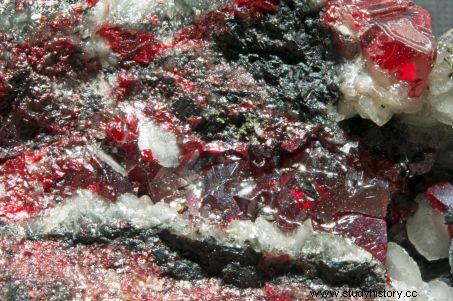American researchers have provided evidence of significant pollution of certain drinking water reservoirs at the ancient Mayan site of Tikal. The mercury and algae identified made the water at the site undrinkable.

The site was abandoned at the end of the 9th century CE.
Classified as a UNESCO World Heritage Site for more than 40 years, the Mayan site of Tikal (Guatemala) is today the playground of researchers from the University of Cincinnati (UC, Ohio, United States). In an article published on June 25, 2020 in the journal Scientific Reports , researchers report significant levels of mercury, phosphates and toxic blue-green algae in two of the city's four drinking water reservoirs. These compounds would have made the water not only undrinkable, but also toxic to its consumers.
"The downside of these algae is that they resist boiling" , said in a press release David Lentz, professor of biological sciences at UC and lead author of the study. "Even boiled, drinking this water would have made people sick." A major problem for this site in the heart of the rainforest, for which the reservoirs were the only sustainable source of water for cooking, drinking or even irrigating the land.
Man-made pollution
According to the researchers, the mercury present in large quantities in the reservoirs would have an anthropogenic origin. It would be more precisely due to cinnabar, a bright red pigment very popular with the Mayas. Obtained from mercury sulphide (HgS), it was used in Central America to adorn buildings, for dyes or even during funeral ceremonies. Over the years and because of the rainy seasons, mercury would have gradually infiltrated the two main reservoirs of the site, reaching up to 17 times the toxicity threshold in the 800s.

The cinnabar was extracted from a volcanic formation near Tikal. Credit:Géry Parent
Geochemical analyzes have also revealed large quantities of phosphates dating back to the same period. These high concentrations are the markers of an increase in organic pollution in the reservoirs, in particular via food waste and faecal contamination. The Mayas would therefore have polluted their own resources until they were unusable...
A pollution fatal to the Mayans?
Famous for its spectacular temples and architecture, the ancient Mayan city of Tikal is equally famous for the mystery surrounding its sudden abandonment in the 9th century AD. If current hypotheses lean towards economic and social factors (competitions between city-states, desacralized kings…) coupled with a multi-decade drought, the UC researchers believe that their discovery was the last missing element to explain this hasty departure.
Reservoir pollution peaks coincide with the peak of the population and shortly precede its decline and departure. This difficulty in finding water would therefore have "contributed to the depopulation and final abandonment of the city" , according to David Lentz.
If the pollution of the water reservoirs alone is not enough to explain the departure of the Maya, it may on the other hand be the reason why the site was not reoccupied after the end of the drought. The team of researchers from the University of Cincinnati plans to return to Tikal in the next few years to finish answering this mysterious question.
